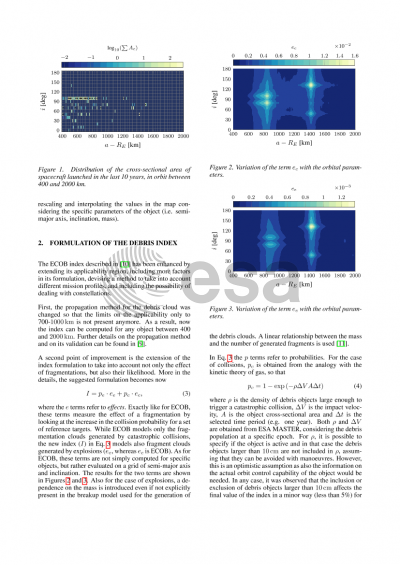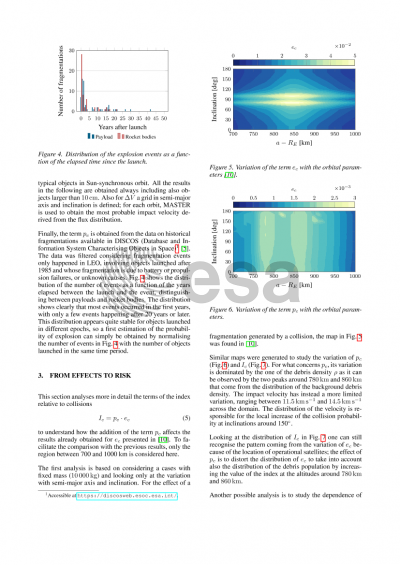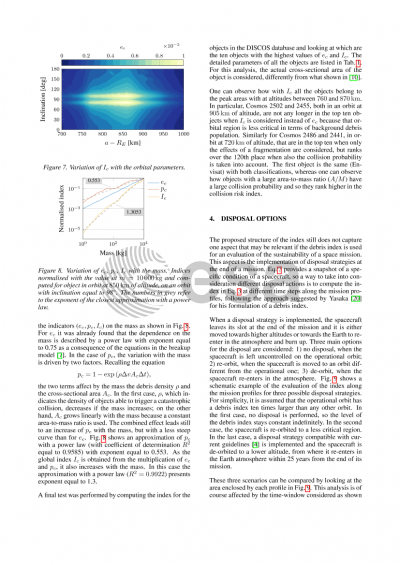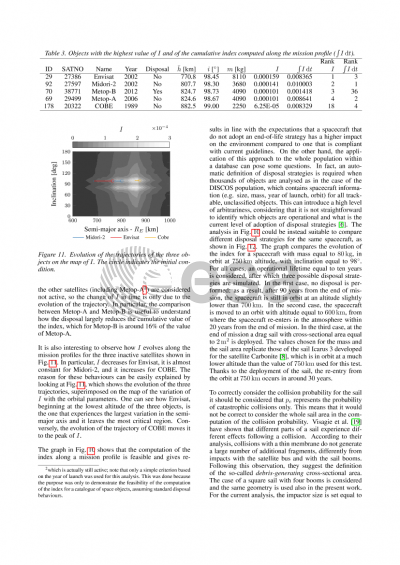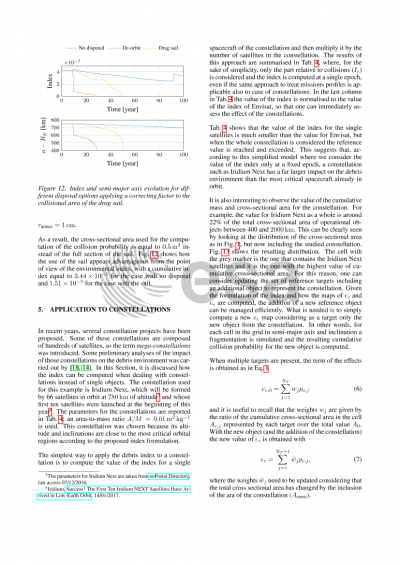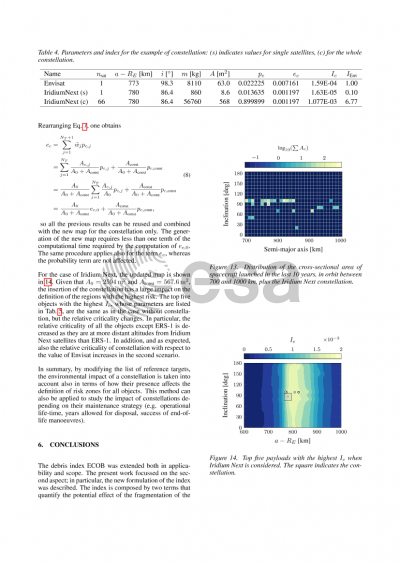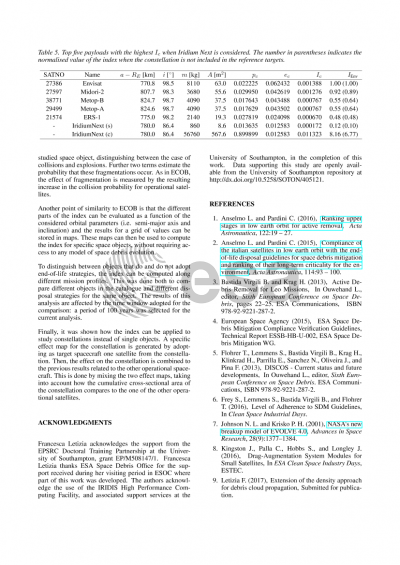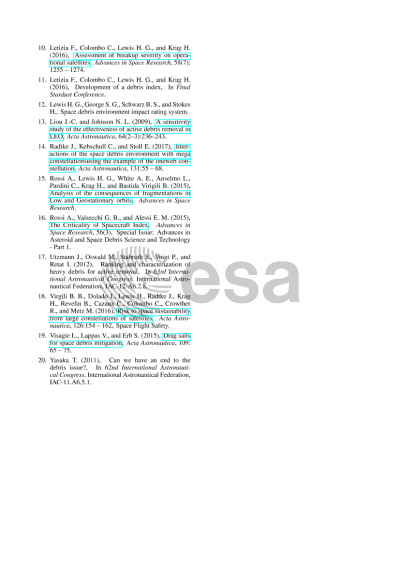Document details

Abstract
Environmental indices for space objects have been proposed to identify good candidates for active debris removal missions and to deal with the licensing process of spacecraft before their launch. A way to rank the environmental impact of space objects can be based on the estimation of their fragmentation risk that, in a simple framework, is obtained from the likelihood and the consequences of the event.
In particular, the index proposed in this work is composed of four terms that express the probability of an explosion happening, a measure of the effects of the explosion on operational satellites, the probability of a collision happening, and a measure of the effects of the collision on operational satellites. For each term, a quantification method is proposed.
The last term has already been developed in previous work by the authors, where the effect of a breakup was measured using the resulting collision probability for a set of target spacecraft with the breakup fragments. The set of targets is defined in a way that is representative of the population of operational satellites. In the current work the same approach is also extended to explosions.
The probability of a collision happening can be estimated by using the analogy with the kinetic theory of gas, such that it depends on the debris density at the object altitude and on the collision velocity relative to the debris at that altitude. In particular, the value of the density refers to the objects that are able to trigger a catastrophic collision. So, given the mass of the object, the energy threshold for catastrophic collisions (40 kJ/g) was applied to find the limit on the impactor size. Then, the corresponding density was derived from MASTER. For the relative velocity, MASTER was used again to identify the most likely impact velocity given the orbital parameters of the studied object.
The probability of an explosion happening can be estimated through an assessment of the historical data of in-orbit fragmentations available via the ESA DISCOS database. The data were analysed, distinguishing between different orbital regimes (e.g. all objects or only Low Earth Orbit) and object type (e.g. payload or rocket bodies).
All the terms were computed for different values of semi-major axis, inclination, and mass, so that a reference map could be defined for each term. The computation of the index for specific objects was then performed through an interpolation process and by re-using the data contained in the generated maps. This means that the computation of the index is fast and does not require access to specific debris models; this feature is important to support the widespread adoption of the index outside the research community.
Finally, the index can be evaluated at a single epoch or along a mission profile to distinguish between spacecraft that do and do not implement end-of-life disposal. This analysis was performed to different classes of objects within a given population (e.g. active/inactive payloads) and to the same spacecraft with different end-of-life options (e.g. re-entry, drag sail, no disposal).
Preview

